Epsom salt has been used for centuries as a natural remedy for various ailments, including muscle pain, stress relief, and skin conditions. One of the more recent uses of Epsom salt is for diaper rash.
Diaper rash is a common condition that affects many babies and is characterized by redness, irritation, and inflammation in the diaper area. While there are many treatments available for diaper rash, Epsom salt baths have become a popular home remedy due to their soothing and healing properties.
Diaper rash is a skin condition that affects babies and is characterized by redness, irritation, and inflammation in the diaper area. It can be caused by a variety of factors, including prolonged exposure to wet or soiled diapers, friction, and the use of certain products, such as soaps and detergents.
While diaper rash is not usually serious, it can be uncomfortable for babies and can lead to more severe skin infections if left untreated.
Epsom salt baths have become a popular home remedy for diaper rash due to their soothing and healing properties. Epsom salt is a natural mineral compound that contains magnesium and sulfate, which are both known for their anti-inflammatory and antibacterial properties.
When added to a warm bath, Epsom salt can help to reduce inflammation, soothe irritated skin, and promote healing.
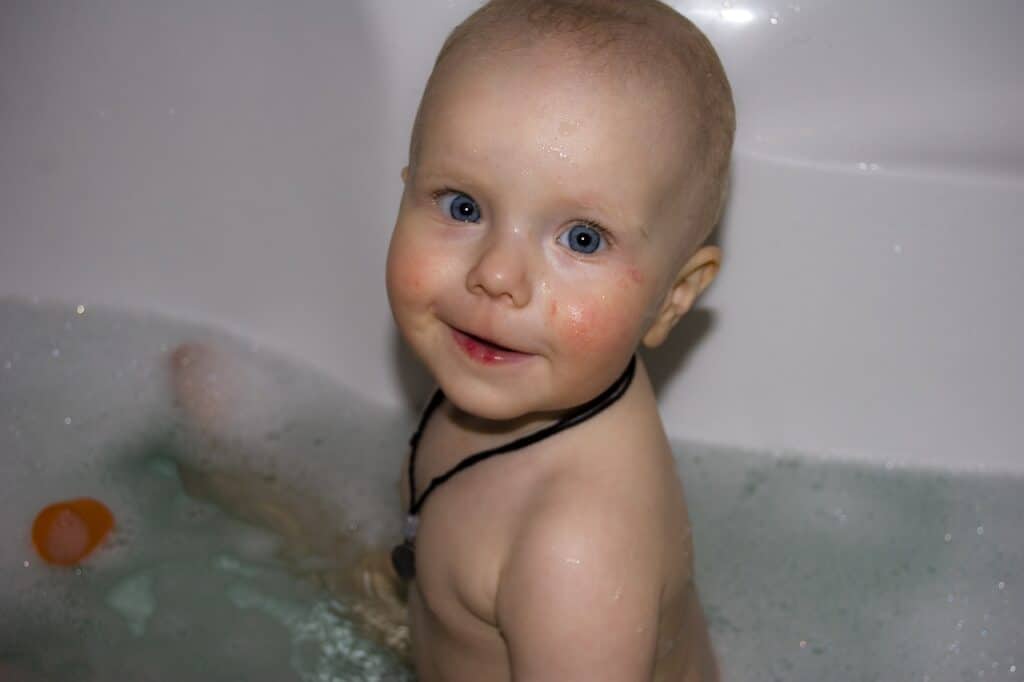
Key Takeaways
- Epsom salt baths can be a soothing and healing home remedy for diaper rash.
- Diaper rash is a common condition that can be caused by a variety of factors.
- In addition to Epsom salt baths, there are other home remedies and medical treatments available for diaper rash.
1. Understanding Diaper Rash
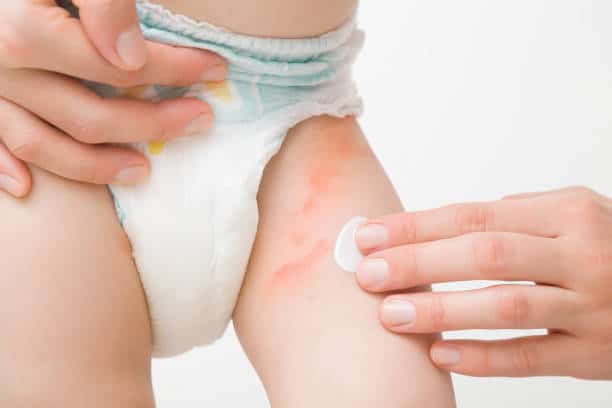
Diaper rash is a common skin problem that affects infants and young children. It is also known as diaper dermatitis and is characterized by redness, irritation, and skin breakdown in the diaper area.
Diaper rash is caused by a combination of factors, including prolonged exposure to moisture, friction, and the presence of irritants in the diaper area. Infants who wear diapers are more likely to develop diaper rash, especially if their skin is sensitive.
The symptoms of diaper rash can vary in severity and may include redness, swelling, bumps, and blisters. In some cases, the affected skin may become raw, tender, and painful.
Preventing diaper rash is key to managing this condition. Parents can take several steps to reduce the risk of diaper rash, including changing diapers frequently, using a barrier cream, and avoiding tight-fitting diapers or clothing.
If your baby develops diaper rash, it is important to keep the affected area clean and dry. You can use gentle cleansers and warm water to clean the diaper area and pat the skin dry.
Applying a diaper cream or ointment can also help to soothe and protect the skin.
In some cases, diaper rash may require medical attention, especially if it is severe or does not improve with home remedies. Your pediatrician can recommend appropriate treatment options, including prescription medications and topical ointments.
Overall, understanding the causes and symptoms of diaper rash can help parents take steps to prevent and manage this common skin problem in infants and young children.
2. Causes of Diaper Rash
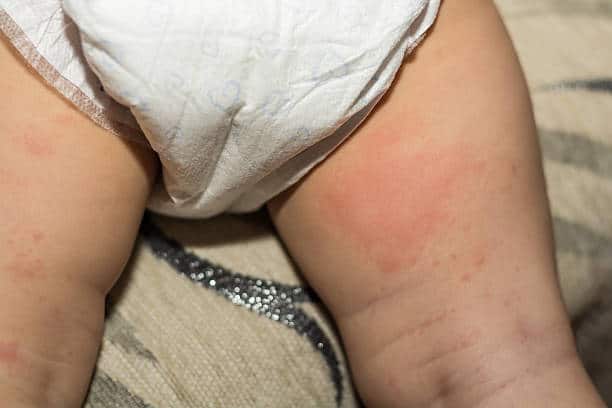
Diaper rash is a common skin problem that affects infants and toddlers. It occurs when the skin in the diaper area becomes irritated, red, and inflamed.
There are several factors that can contribute to the development of diaper rash.
One of the primary causes of diaper rash is prolonged exposure to wetness. When the skin is constantly moist, it becomes more susceptible to irritation and inflammation.
Urine and stool can also contribute to diaper rash by increasing the acidity of the skin and causing irritation.
Another factor that can contribute to diaper rash is the use of wipes. Some wipes contain chemicals that can be harsh on the skin and cause irritation.
Additionally, wiping too vigorously can further irritate the skin and worsen diaper rash.
Infrequent diaper changes can also contribute to diaper rash. When a wet or soiled diaper is left on for too long, it can lead to increased moisture and irritation of the skin.
In some cases, diaper rash can be caused by bacteria or yeast. These microorganisms can thrive in the warm, moist environment of the diaper area and cause infection.
Overall, the causes of diaper rash are multifactorial and can vary from child to child. It is important to identify and address the underlying cause of diaper rash in order to effectively treat and prevent it.
3. Epsom Salt Bath for Diaper Rash
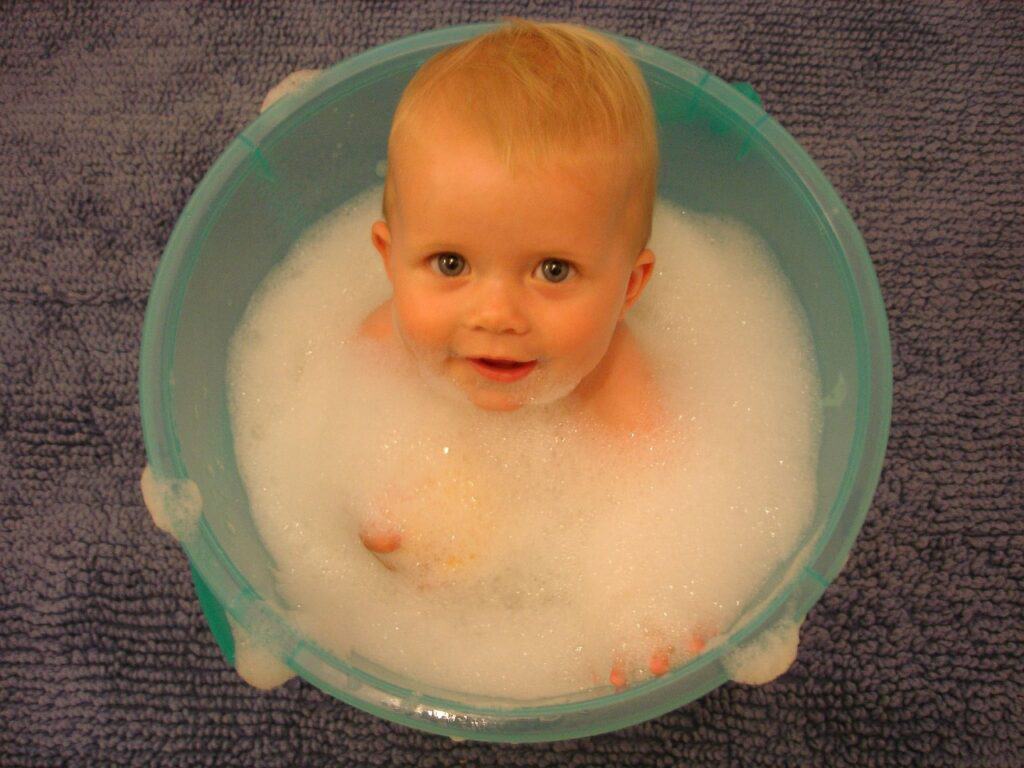
Epsom salt is a natural remedy that can help relieve diaper rash. A warm bath with Epsom salt can soothe the skin and speed up the healing process.
To prepare an Epsom salt bath, add two cups of Epsom salt to a warm bath. Make sure the water is not too hot, as this can irritate the skin.
Soak the affected area for 10-15 minutes, allowing the salt to dissolve and penetrate the skin.
Epsom salt contains magnesium sulfate, which has anti-inflammatory properties that can reduce redness and swelling. It can also help draw out toxins and impurities from the skin.
It is important to note that Epsom salt baths should not be used in saltwater pools or with table salt, as this can cause further irritation. Stick to using Epsom salt in warm water for a relaxing and healing bath.
Overall, an Epsom salt bath can be a helpful addition to your diaper rash treatment routine. Consult with a healthcare professional if the rash persists or worsens.
4. Other Home Remedies for Diaper Rash

Aside from Epsom salt baths, there are other home remedies that can help alleviate diaper rash. These remedies are often natural and readily available, making them a convenient option for parents.
One remedy is baking soda, which can help soothe irritated skin. Mixing a tablespoon of baking soda with water to create a paste can be applied to the affected area for up to 10 minutes before rinsing off.
Aloe vera is another natural remedy that can help reduce inflammation and promote healing. Applying a small amount of pure aloe vera gel to the affected area can provide relief for irritated skin.
Apple cider vinegar can also be used as a natural remedy for diaper rash. Diluting a small amount of apple cider vinegar with water and applying it to the affected area can help balance the skin’s pH levels and reduce inflammation.
Clay, such as bentonite clay, can be used as a gentle and natural way to soothe diaper rash. Mixing the clay with water to create a paste and applying it to the affected area can help draw out toxins and reduce inflammation.
Witch hazel is another natural remedy that can help soothe diaper rash. Applying a small amount of witch hazel to the affected area can help reduce inflammation and promote healing.
Homemade creams made with natural ingredients such as coconut oil, olive oil, and cornstarch can also be effective in treating diaper rash. These creams can be made by mixing the ingredients together and applying them to the affected area.
Finally, saltwater can be used to help soothe diaper rash. Adding a small amount of salt to warm water and soaking the affected area can help reduce inflammation and promote healing.
Overall, there are many natural remedies that can help alleviate diaper rash. However, it is important to consult with a healthcare professional before trying any new remedies, especially if the rash is severe or does not improve with home treatment.
5. Preventing Diaper Rash

Diaper rash is a common problem that many parents face. However, it can be prevented with some simple steps. Here are some tips to help prevent diaper rash:
Choosing the Right Diapers
Choosing the right diaper is crucial in preventing diaper rash. Parents can choose between disposable or cloth diapers.
However, it is important to note that both types of diapers can cause diaper rash if they are not changed frequently enough.
Disposable diapers are convenient and easy to use. Parents should look for chlorine-free disposable diapers, which are less likely to cause diaper rash.
They should also choose diapers that are alcohol-free and fragrance-free.
Cloth diapers are more eco-friendly and can be reused. However, parents should make sure to change them frequently to prevent diaper rash.
They should also use a laundry detergent that is free of fragrances and other irritants.
Using Baby Wipes
Baby wipes are a convenient way to clean up after a diaper change. However, they can also cause diaper rash if they contain alcohol or other irritants.
Parents should choose baby wipes that are alcohol-free and fragrance-free.
Allowing for Air Exposure
Allowing for air exposure is an effective way to prevent diaper rash. After a diaper change, parents should let their baby’s bottom air dry for a few minutes before putting on a new diaper.
This can help prevent moisture from building up and causing diaper rash.
Changing Diapers Frequently
Changing diapers frequently is important in preventing diaper rash. Parents should change their baby’s diaper as soon as it is wet or soiled.
This can help prevent moisture from building up and causing diaper rash.
In conclusion, preventing diaper rash is possible with some simple steps. Parents should choose the right diapers, use baby wipes that are alcohol-free and fragrance-free, allow for air exposure, and change diapers frequently.
By following these tips, parents can help prevent diaper rash and keep their baby’s bottom healthy and happy.
6. Medical Treatments for Diaper Rash
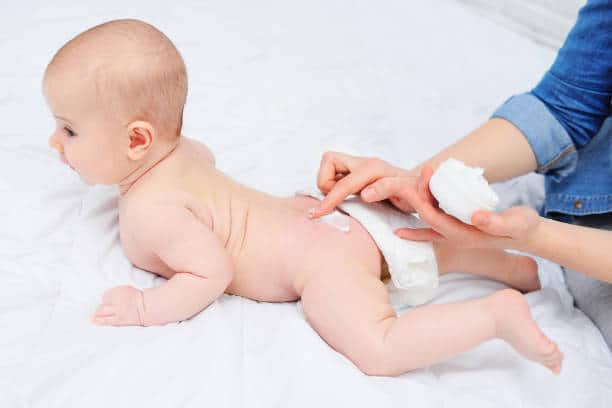
In some cases, diaper rash can be severe enough to require medical treatment. The following are some of the common medical treatments for diaper rash:
- Ointments: Ointments containing zinc oxide can help soothe and protect the skin. These ointments create a barrier between the skin and the diaper, helping to prevent further irritation.
- Oil: Applying oil to the affected area can help soothe the skin and reduce inflammation. Some oils that may be helpful include coconut oil, olive oil, and almond oil.
- Petroleum jelly: Like ointments, petroleum jelly can help protect the skin and prevent further irritation. It can also help soothe the skin and reduce inflammation.
- Over-the-counter medication: There are several over-the-counter creams and ointments that can help treat diaper rash. These products typically contain ingredients like zinc oxide or hydrocortisone.
- Antibiotics: If the diaper rash is caused by a bacterial infection, antibiotics may be necessary to clear up the infection. A doctor or pediatrician can prescribe antibiotics if they are needed.
- Antifungal cream: If the diaper rash is caused by a fungal infection, such as a yeast infection, an antifungal cream may be necessary to clear up the infection.
- Prescription medication: In severe cases, a doctor may prescribe a prescription medication to help clear up the diaper rash.
It is important to note that not all cases of diaper rash require medical treatment. In many cases, simple home remedies like frequent diaper changes, gentle cleaning, and using a diaper rash cream can be enough to clear up the rash.
However, if the rash is severe or does not improve with home remedies, it may be necessary to seek medical treatment. The Mayo Clinic recommends contacting a doctor or pediatrician if the rash is severe, lasts longer than a few days, or is accompanied by other symptoms like fever or pus-filled blisters.
7. When to Consult a Doctor

In most cases, diaper rash can be treated at home with Epsom salt baths and other remedies. However, it is important to know when to seek medical attention.
Here are some situations where it may be necessary to consult a doctor:
- Severe rash: If the rash is severe and does not improve after a few days of home treatment, it may be necessary to consult a doctor. A severe rash may be accompanied by blisters, open sores, or bleeding.
- Fever: If the baby has a fever along with the diaper rash, it may be a sign of a secondary infection. In such cases, it is important to consult a doctor immediately.
- Pus or discharge: If the rash is accompanied by pus or discharge, it may be a sign of a bacterial or yeast infection. A doctor may need to prescribe antibiotics or antifungal medication to treat the infection.
- Yeast infection: If the rash is caused by a yeast infection, it may be difficult to treat with home remedies alone. A doctor may need to prescribe antifungal medication to clear up the infection.
- Candida: Candida is a type of fungus that can cause diaper rash. If the rash is caused by candida, it may be necessary to consult a doctor for treatment.
In general, if the diaper rash is not improving after a few days of home treatment or if it is accompanied by other symptoms, it is important to consult a doctor. A doctor can help determine the underlying cause of the rash and prescribe appropriate treatment.
8. Additional Tips for Diaper Rash Care
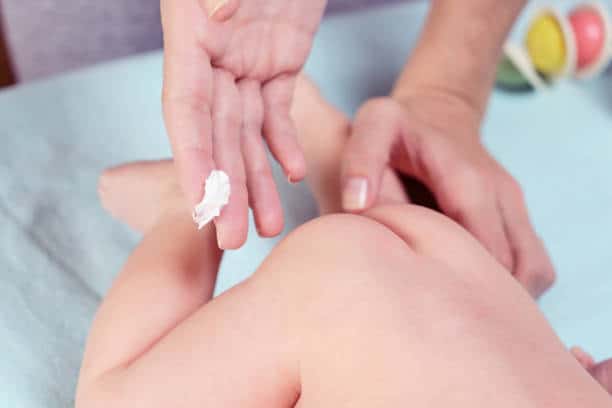
In addition to using Epsom salt baths for diaper rash, there are several other tips that can help soothe and prevent diaper rash.
One important tip is to be mindful of sensitive skin. Babies with sensitive skin may be more prone to diaper rash, so it’s important to use gentle products and avoid harsh chemicals whenever possible.
This includes using a gentle washcloth and avoiding products with artificial fragrances or other harmful chemicals.
Another tip is to address any discomfort your baby may be experiencing. If your baby seems uncomfortable or irritable, try using human breast milk as a natural remedy.
You can also use essential oils like Roman chamomile to help calm and soothe sore skin.
It’s also important to keep your baby hydrated, as dehydration can worsen diaper rash. Make sure your baby is getting enough fluids, and consider using a moisturizing shampoo clay to help keep their skin hydrated.
Finally, if your baby is experiencing sore muscles or other discomfort, consider using a warm compress or massage to help soothe their symptoms. Just be sure to follow the guidelines from the American Academy of Pediatrics to ensure that any massage or other treatment is safe for babies.
By following these tips and using Epsom salt baths as a natural remedy, you can help prevent and treat diaper rash in a safe and effective way.
Related Posts:
Frequently Asked Questions
How effective is an Epsom salt bath for soothing diaper rash?
Epsom salt baths can be effective in soothing diaper rash. The magnesium sulfate in Epsom salt can help reduce inflammation and itching. However, it is important to note that Epsom salt baths should not be used as a substitute for medical treatment if the rash is severe or does not improve with home remedies.
Can coconut oil be used as a natural remedy for diaper rash?
Coconut oil is a natural remedy that can be used to soothe diaper rash. It has anti-inflammatory and antimicrobial properties that can help reduce redness and irritation. However, it is important to ensure that the coconut oil is pure and does not contain any additives or fragrances that may irritate the skin.
What are some other natural remedies for treating diaper rash?
In addition to Epsom salt baths and coconut oil, there are several other natural remedies that can be used to treat diaper rash. These include aloe vera, calendula cream, and oatmeal baths. It is important to note that natural remedies should not be used as a substitute for medical treatment if the rash is severe or does not improve with home remedies.
Is it safe to use Epsom salt in a baby’s bath?
Epsom salt can be used in a baby’s bath, but it is important to use caution and follow proper dilution guidelines. Generally, a tablespoon of Epsom salt per gallon of water is a safe ratio for babies. It is also important to ensure that the water temperature is appropriate for the baby’s age and that the baby is supervised at all times.
Are there any risks associated with using Epsom salt for diaper rash?
While Epsom salt is generally safe to use for diaper rash, there are some risks associated with its use. Overuse or using too much Epsom salt can cause skin irritation and dryness. Additionally, if the rash is severe or does not improve with home remedies, it is important to seek medical treatment.
What are some signs that a diaper rash is severe and requires medical attention?
Signs that a diaper rash may be severe and require medical attention include the presence of blisters, open sores, or pus-filled bumps. If the rash is accompanied by a fever or other symptoms such as vomiting or diarrhea, it is important to seek medical attention immediately.

Iesha is a loving mother of 2 beautiful children. She’s an active parent who enjoys indoor and outdoor adventures with her family. Her mission is to share practical and realistic parenting advice to help the parenting community becoming stronger.
